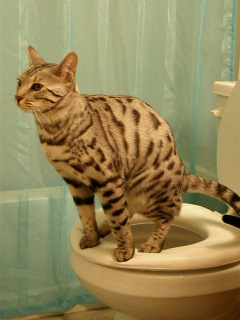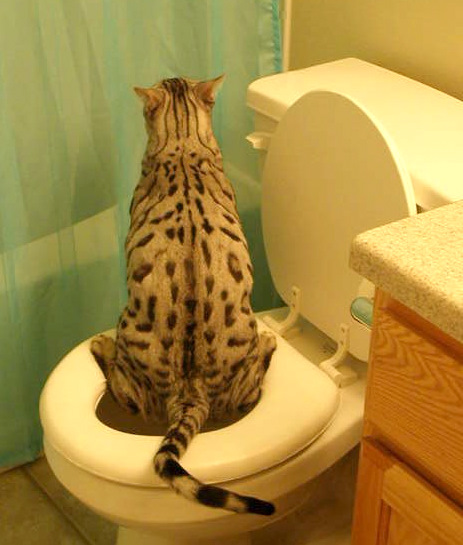How do you really feel in regards to 4 Reasons Why Dog Poop Cleanup is Important?

When it involves disposing of waste, particularly animal waste, many people often consider the hassle-free option of flushing it down the commode. Nevertheless, this seemingly easy solution can have serious consequences for the setting and public health. In this short article, we'll discover why flushing animal waste down the bathroom is a negative idea and offer alternate methods for correct disposal.
Intro
Proper waste disposal is important for keeping environmental sustainability and public health. While it might appear safe to flush animal waste down the commode, it can bring about numerous issues, both for the environment and human well-being.
Risks of flushing animal waste
Ecological influence
Purging pet waste introduces unsafe germs and microorganisms into rivers, which can adversely impact water ecosystems. These virus can infect water resources and injury marine life, disrupting delicate environments.
Public health worries
Pet waste consists of unsafe bacteria such as E. coli and Salmonella, which can pose serious health threats to human beings. Purging animal waste down the bathroom can pollute water supplies, leading to the spread of illness and infections.
Alternatives to flushing
As opposed to flushing animal waste down the toilet, there are several different disposal methods that are much more eco-friendly and sanitary.
Composting
Composting pet waste is a green method to throw away it. By composting, organic matter is broken down into nutrient-rich dirt, which can be used to feed yards and plants.
Garbage dump disposal
Taking care of animal waste in a land fill is another alternative. While not as environmentally friendly as composting, it is a much safer choice to flushing, as it protects against the contamination of water sources.
Pet waste disposal systems
There are specialized family pet garbage disposal systems available that securely and hygienically get rid of animal waste. These systems commonly make use of enzymes to break down waste and eliminate smells.
Steps to appropriate pet waste disposal
To make certain proper disposal of pet waste, adhere to these actions:
Scooping and landing waste
Routinely scoop and bag animal waste using biodegradable bags. This avoids waste from polluting the environment.
Utilizing designated waste bins
Dispose of bagged animal waste in marked waste bins, such as garden compost containers or landfill bins. Avoid flushing it down the commode whatsoever expenses.
Cleaning litter boxes and family pet areas regularly
Frequently clean can and animal areas to prevent the build-up of waste and microorganisms. Use pet-safe cleaning products to maintain health.
Advantages of correct disposal approaches
Taking on correct disposal techniques for animal waste supplies numerous advantages:
Lowered environmental pollution
Proper disposal methods minimize the danger of environmental pollution, shielding waterways and ecosystems from contamination
Reduced danger of water contamination.
By avoiding flushing pet waste down the bathroom, the risk of water contamination is significantly lowered, guarding public health.
Improved cleanliness and health
Proper disposal techniques advertise much better sanitation and hygiene, creating a much safer atmosphere for both humans and animals.
Verdict
To conclude, purging pet waste down the commode is hazardous to the environment and public health. By embracing alternative disposal methods and following proper waste administration techniques, we can lessen the adverse impact of animal waste and add to a cleaner, much healthier planet.
What To Do With Dog Poo – The Do's And Don'ts Of Disposing Of Faeces
Dog poo bins
Some councils provide dedicated dog waste bins in popular dog-walking areas that can take dog poo that has been bagged but you can legally dispose of dog waste in any public litter bin, as long as it is securely bagged. This also applies to your wheelie bin at home.
Do not flush
Water companies do not recommend flushing dog faeces down the toilet because certain parasites can survive the water processing treatment and are potentially harmful to humans. You should also never consider flushing dog poo that has been bagged down the toilet as the bags will not break down and instead create severe blockages in the sewage system.
In the woods
The Forestry Commission promotes a ‘stick and flick’ method for dealing with waste in the woods. This means finding a stick and using it to flick any poo from off the path so that it is out of the way of other walkers. You could also bury it as long as it is not in an area where there might be livestock.
Livestock
Parasites found in dog poo can be transmitted to livestock if they inadvertently eat infected faeces that has been left on grazing land. This could result in the death of sheep or abortion in cattle so you should always make sure you pick up your dog’s waste in fields where livestock could be present.

Frequently clean can and animal areas to prevent the build-up of waste and microorganisms. Use pet-safe cleaning products to maintain health.
Advantages of correct disposal approaches
Taking on correct disposal techniques for animal waste supplies numerous advantages:
Lowered environmental pollution
Proper disposal methods minimize the danger of environmental pollution, shielding waterways and ecosystems from contamination
Reduced danger of water contamination.
By avoiding flushing pet waste down the bathroom, the risk of water contamination is significantly lowered, guarding public health.
Improved cleanliness and health
Proper disposal techniques advertise much better sanitation and hygiene, creating a much safer atmosphere for both humans and animals.
Verdict
To conclude, purging pet waste down the commode is hazardous to the environment and public health. By embracing alternative disposal methods and following proper waste administration techniques, we can lessen the adverse impact of animal waste and add to a cleaner, much healthier planet.
What To Do With Dog Poo – The Do's And Don'ts Of Disposing Of Faeces
Dog poo bins
Some councils provide dedicated dog waste bins in popular dog-walking areas that can take dog poo that has been bagged but you can legally dispose of dog waste in any public litter bin, as long as it is securely bagged. This also applies to your wheelie bin at home.
Do not flush
Water companies do not recommend flushing dog faeces down the toilet because certain parasites can survive the water processing treatment and are potentially harmful to humans. You should also never consider flushing dog poo that has been bagged down the toilet as the bags will not break down and instead create severe blockages in the sewage system.
In the woods
The Forestry Commission promotes a ‘stick and flick’ method for dealing with waste in the woods. This means finding a stick and using it to flick any poo from off the path so that it is out of the way of other walkers. You could also bury it as long as it is not in an area where there might be livestock.
Livestock
Parasites found in dog poo can be transmitted to livestock if they inadvertently eat infected faeces that has been left on grazing land. This could result in the death of sheep or abortion in cattle so you should always make sure you pick up your dog’s waste in fields where livestock could be present.

I stumbled upon that article on while doing a search on the search engines. Enjoyed our review? Please quickly share it. Let somebody else locate it. Kudos for being here. Please check our blog back soon.
Call